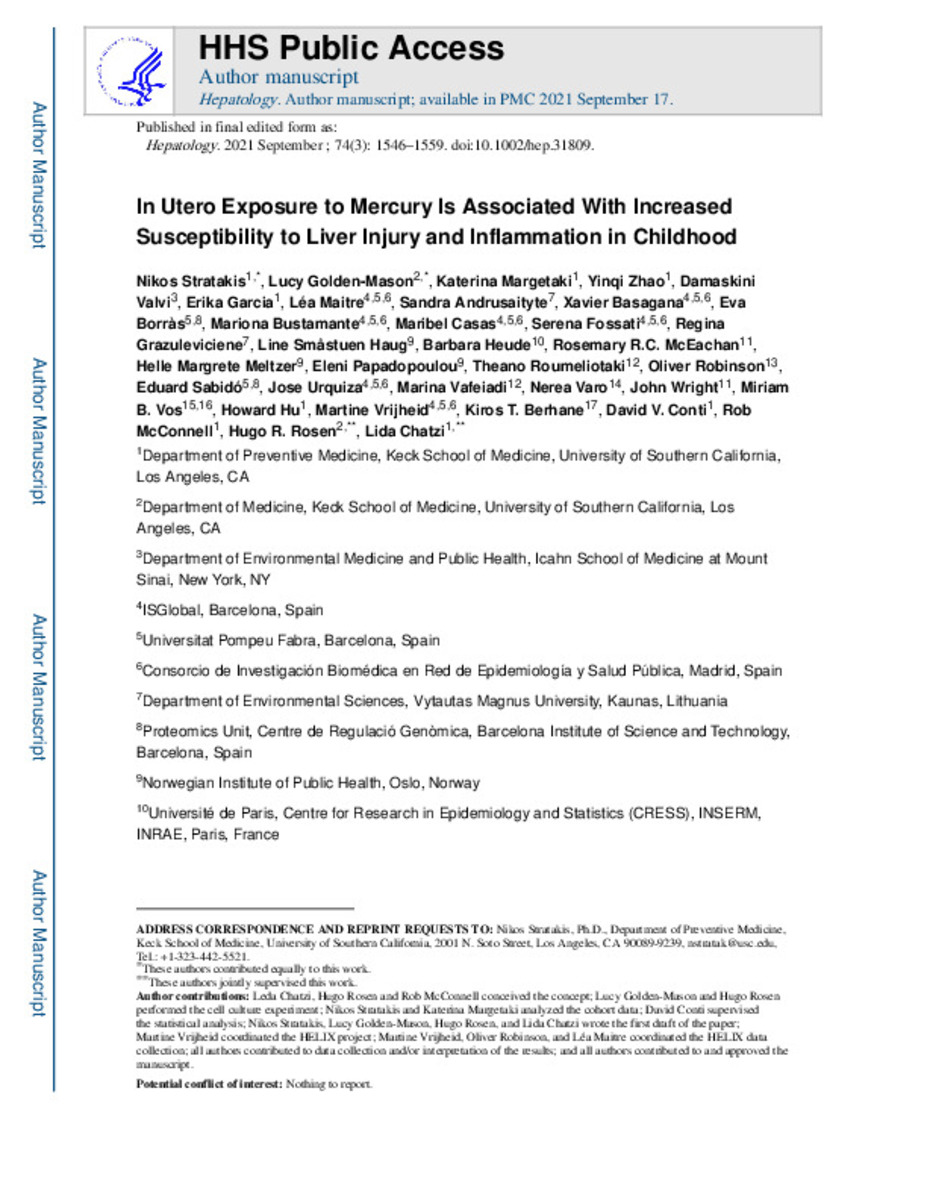In utero exposure to mercury is associated with increased susceptibility to liver injury and inflammation in childhood
Ficheros en este ítem:
Estadísticas e impacto
Los ítems de Dadun están protegidos por copyright, con todos los derechos reservados, a menos que se indique lo contrario.











